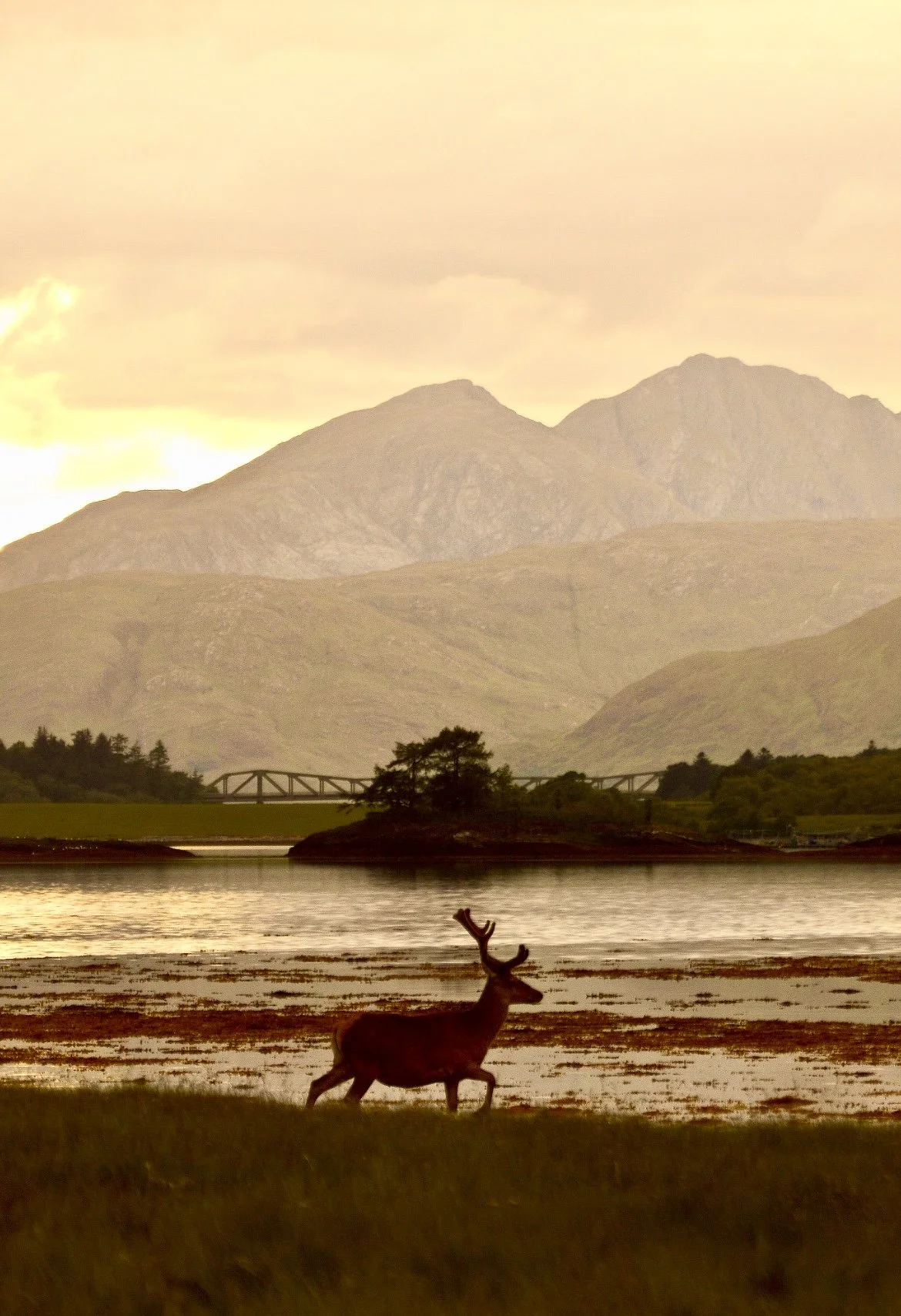Ghosts of Glen Coe
The egret ignores me; its attention solely fixed on hunting for stickleback as it stalks through the shallows with precision. We seem to have struck a kind of silent truce to keep to our respective sides of the burn. “My” bank is hazy with ferns, their lacey fronds almost obscuring a trail of deer prints pressed into the soft earth. I think back to last night: when a stag and two does traced a path above the waterside, deftly managing the rocky crags with ease. Their presence seems to dominate, even when they aren’t here.
The burns’ water meanders over the rock-freckled bed, sunlight sashaying off its surface. I dip my hand into it, and watch as my body distorts, my skin immediately bleaching. Glen Coe is a landscape sculpted by water; mountains cleaved by ancient glaciers, a loch at its heart, and burns that have carved their way through the terrain. But its beauty belies a darker story; there is death here, too. The name of this valley is synonymous with the massacre that took place over three centuries ago, the locals famously becoming victims of the Anglo-Scottish power struggle. When soldiers began their slaughter of the MacDonalds of Glencoe in the early hours of 13th February 1692, many of the villagers escaping the muskets fled into this valley, up the narrow side glens, seeking refuge in the mountains. They would have known these hills intimately, in ways that have been lost to us today. But a Highland winter can be unforgiving, and even the most land-wise clan member would have struggled, the harsh conditions acting as both a saviour and a threat.
I picture the villagers in the valley, snow clouds invading a bruised sky as they ran into the mountains, confused and disorientated, betrayed and devastated. Half-dressed, gripping small children in shivering arms, desperately forcing their way through an increasing blizzard, fear driving them forward, grief holding them back. Human footprints getting muddled with deer's, before the flurry masked them nearly as fast as they were laid down. Their settlement, where they welcomed the 120 soldiers as friends and gave them hospitality for almost two weeks, now ablaze under the gunmetal sky, and those who managed to get out with their lives faced new dangers - out of the fire and into the ice. The waterways would have offered a way to orient them in the white-out, a map etched in flowing lines. The River Coe would have been no refuge; soldiers had been posted along it to intercept any MacDonald trying to escape, cauterising the clans' attempts to flee. One elderly man reportedly lost his life there, shot before his body was carried away by the flow, a water burial on the river that once gave him life. But the burns, those not frozen, would have whispered which way to go, whilst the freezing water would have gently cleaned wounds, numbed pain, and soothed smoke-scarred throats. The same valley that once hid the MacDonald Clan’s stolen cattle suddenly had the duty of hiding the people, too. But the valley couldn’t protect them all; while the snow obscured their tracks and slowed their pursuers, many succumbed to the merciless winter.
Come the spring, plants would have grown in the places where they fell, enveloping each spot in secrecy so that only the land would remember where the dead had breathed their last, long after they were taken away for burial. But the legacy of those who lost their lives has remained here, impressed in the acidic soil that feeds the heather, their bodies imprinting the earth like the footprints of the deer that are etched across this landscape.
At dusk, back at the campsite, I watch as a Highlander wades through the shallows of Loch Leven, each stride breaking the still water. Crowned by the weight of all that has passed here, he cuts across the view of Eilean Munde, the burial island which guards the remains of the MacDonald Clan. Among those laid to rest there is their chieftain, MacIain, the first casualty of the attack, and his wife, who lost her life later in the valley, both now cradled by the water that was once their home.
The stag lifts his head, flanks tight, and gives a single, guttural bark, and the loch at his heels stirs in response.
